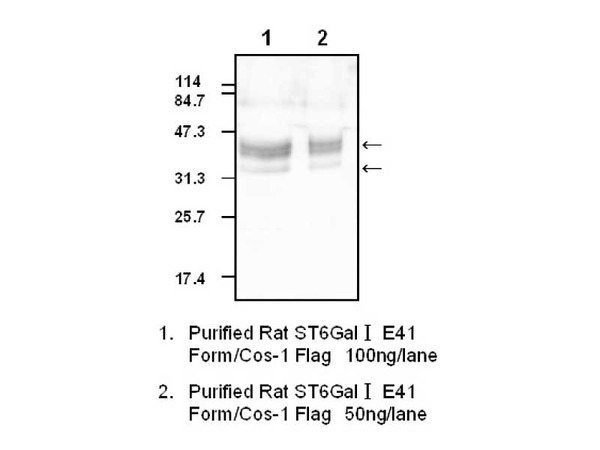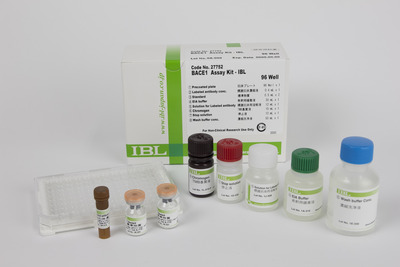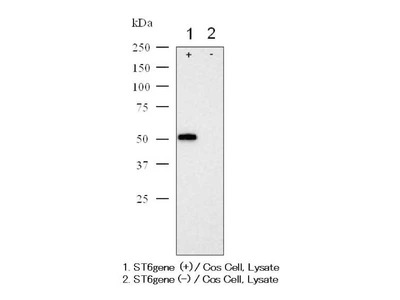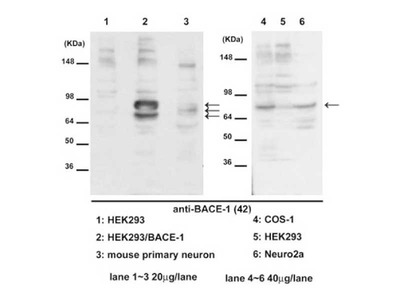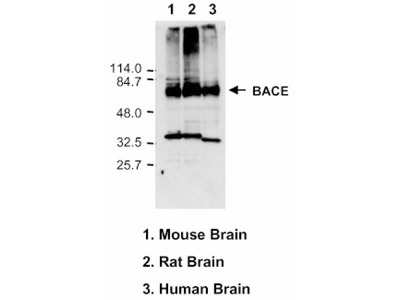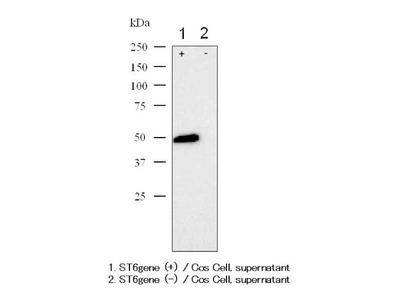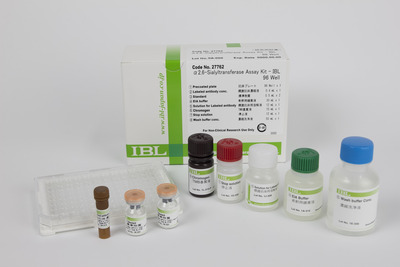- HOME >
- For Researchers >
- Product Search >
- Search Result >
- #28047 Anti- α2, 6-Sialyltransferase (M2) Rabbit IgG Affinity Purify
Product Search
#28047 Anti- α2, 6-Sialyltransferase (M2) Rabbit IgG Affinity Purify
- Intended Use:
- Research reagents
- Application:
- WB
- Package Size1:
- 100 μg
- Package Size2:
- 10 μg
- Note on Application Abbreviations
- WB:Western Blotting
※ The product indicated as "Research reagents" in the column Intended Use cannot be used
for diagnostic nor any medical purpose.
※ The datasheet listed on this page is sample only. Please refer to the datasheet
enclosed in the product purchased before use.
Product Overview
Product Overview
| Product Code | 28047 |
|---|---|
| Product Name | Anti- α2, 6-Sialyltransferase (M2) Rabbit IgG Affinity Purify |
| Intended Use | Research reagents |
| Application | WB |
| Immunizing antigen | Synthetic peptide of a part of α2, 6-sialyltransferase(NSQLVTTEKRFLKDSL) (the part common to human, mouse and rat) |
| Purification Method | Purified with antigen peptide |
| Specificity | Reacts with human, mouse, rat α2, 6-sialyltransferase |
| Package Form | Lyophilized product from 1 % BSA in PBS containing 0.05 % NaN3 |
| Storage Condition | 2 - 8℃ |
| Poisonous and Deleterious Substances | Applicable |
| Cartagena | Not Applicable |
| Package Size 1 | 100 μg |
| Package Size 2 | 10 μg |
| Remarks1 | The commercial use of products without our permission is prohibited. Please make sure to contact us and obtain permission. |
Product Description
Product Description
The histopathological picture of Alzheimer’s disease is characterized by senile plaques and neurofibrillary tangles, and because the senile plaques form first, they are considered the initial lesion. Senile plaques are known to be formed by accumulation of β-amyloid peptide (Aβ). Aβ peptide is produced by the cleavage of amyloid precursor protein (APP) by two types of proteolytic enzymes. The first cleavage is performed by β-secretase (BACE1), and the second γ-secretase. It is thought that their inhibitors may be capable of serving as safe drugs for the treatment of Alzheimer’s disease. In recent years a glycosyltransferase involved in the biosynthesis of sugar chains (α2,6-sialyltransferase) has also been shown to be cleaved by BACE1. The cleavage site was identified at the same time, and as a result it was demonstrated that in humans it produces cleavage-type α2,6-sialyltransferase (E44 Form) and in rats it produces cleavage-type α2,6-sialyltransferase (E41 Form).
FAQ
FAQ
-
 Q.Which isoform can be detected by this antibody?
Q.Which isoform can be detected by this antibody? -
 A.It does react to both intact and cleaved isoform (E41) of α2, 6-Sialyltransferase.
A.It does react to both intact and cleaved isoform (E41) of α2, 6-Sialyltransferase.

